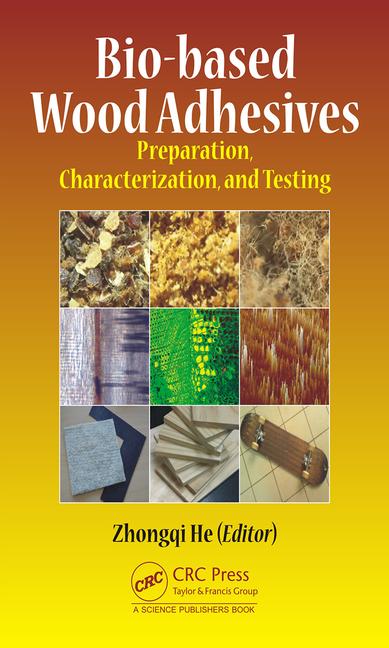Adhesives and Sealants for Hydrogen-Based Fuel Cell Assembly
As demand for hydrogen-based fuel cells increases, sealants and adhesives play a crucial role in providing reliable sealing that facilitates automated production.

courtesy of Marcus Millo / iStock / Getty Images Plus
Hydrogen-based fuel cells achieve high performance and are energy-efficient. They produce no harmful emissions because only water and electrical energy are released when hydrogen reacts with oxygen. Therefore, the technology holds considerable potential for powering electric vehicles as the world transitions away from fossil-based transportation. Since hydrogen is the smallest of all molecules, the adhesives and sealants used for fuel cells must ensure a very tight seal in order to prevent diffusion. Silicones and polyurethanes from WEVO-CHEMIE GmbH are developed for this purpose. Additionally, these products’ low gas permeability has been confirmed by ZBT, the hydrogen and fuel cell center in Duisburg, Germany. The products can be used both for fuel cells themselves (“stacks”) and in the surrounding system (“balance of plant”).
Fuel cells consist of several functional layers that can differ both in terms of the materials and components used as well as in terms of the working principle. One of the most common types, which is currently being widely researched because of its suitability for the automotive sector, is the so-called PEM fuel cell (Proton Exchange Membrane Fuel Cell), which is shown in Figure 1.
The bipolar plates ensure a steady supply of hydrogen to the cells and simultaneously control the release of electrical energy. Since hydrogen is flammable and can form explosive mixtures (oxyhydrogen) in oxygen-containing atmosphere, reliable sealing of the individual cells is essential. The sealing materials must not only be highly impermeable to gas; they must also be resistant to challenging conditions such as continuous high temperatures of up to 120 °C or low pH. Furthermore, if the bipolar plates have tolerances due to manufacturing, this results in uneven pressure distribution on the sealing materials, which has to be compensated – especially while the stacks are being pressed.
 Structure of a pem fuel cell with liquid gaskets applied. courtesy of WEVO-CHEMIE GMBH
Structure of a pem fuel cell with liquid gaskets applied. courtesy of WEVO-CHEMIE GMBH
Up to now, products such as preformed inlay gaskets have been used for this purpose. However, due to the need to insert them manually on both sides of each bipolar plate, they are not suitable for automated production of high volumes, i.e. for the automotive sector in particular. Furthermore, there is a risk that they will detach the bipolar plate during stacking, so that they no longer seal effectively. The commercially available, addition-curing silicone liquid gaskets that are offered as alternatives likewise have drawbacks, such as their generally high gas permeability and their poor adhesion to the majority of substrates. Wevo therefore developed special, chemically resistant, two-component materials based on polyurethane and silicone for use in PEM fuel cells. They are applied as liquid formed in-place gasket and also offer advantages for the manufacture and operation of fuel cell components.
Low Gas-Permeable Materials
The unusually low gas permeability of these materials has been confirmed by ZBT, the Duisburg hydrogen and fuel cell center, a research institutes in Europe with expertise in this field. One of the silicone-based products exhibited a very low hydrogen permeation coefficient of about 130 E-8 cm²/s after a measurement time of 16 hours (a figure between 500 and 1000 E-8 cm²/s is typical for addition-curing silicones). Moreover, adhesion to metal surfaces was optimized and the compression set reduced.
Wevo’s polyurethane sealants, which have similar thermo-mechanical properties to silicones, have even lower hydrogen permeability depending on the Shore hardness setting. Their permeation coefficients vary between about 30 and 70 E-8 cm²/s, also after a 16-hour measurement period. What’s more, these products adhere significantly better than silicones to the different substrates of bipolar plates. This prevents the seal from detaching either in the course of the manufacturing process or during stacking, so that loss of sealing effect is no longer an issue. Lastly, faster curing is possible compared to silicones — a major asset when it comes to automated production of high volumes.
Adhesives in Fuel Cells
Polyurethane-based products can additionally be used as adhesives for other applications in the fuel cell stack due to their good adhesion properties. These adhesives can be used for bonding the entire stack together; they can also be used to simultaneously join and seal the bipolar plates’ two half-shells using customized, soft and elastic polyurethanes. For metallic bipolar plates, this joining method can be employed as an alternative to laser welding; with plates based on graphite/polymer composites, durable bonding is very important.
In the balance of plant (BOP), that is the fuel cell system, the humidifier’s components can be reliably bonded in this way. This is because the high ion purity and low levels of VOCs in these polyurethanes rule out damage to the sensitive, ion-selective polymer membranes and the associated drop in performance. High hydrolysis resistance at temperatures up to 100 °C is ensured, too, by the special composition of the adhesives.
The anode recirculation blower or the air compressor installed in the air circuit are other possible applications in the BOP. In the latter case, Wevo’s epoxy resins and silicones enable potting of the stator for the drive motor. By optimizing the thermal conductivity and crack resistance of the materials, the forces produced during rotation are compensated and the heat generated is removed in a targeted way. Special, thermally conductive, polyurethane potting compounds and silicone gels for the power modules are likewise used for power electronic components such as DC/DC converters, on-board chargers and control units.
Learn more about WEVO-CHEMIE GMBH at www.wevo-chemie.de/en.
Looking for a reprint of this article?
From high-res PDFs to custom plaques, order your copy today!







